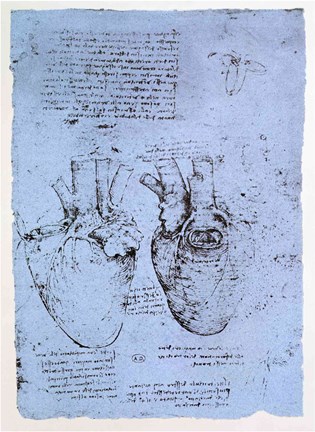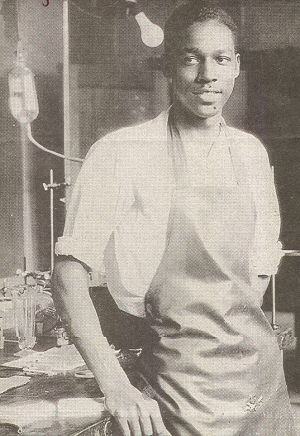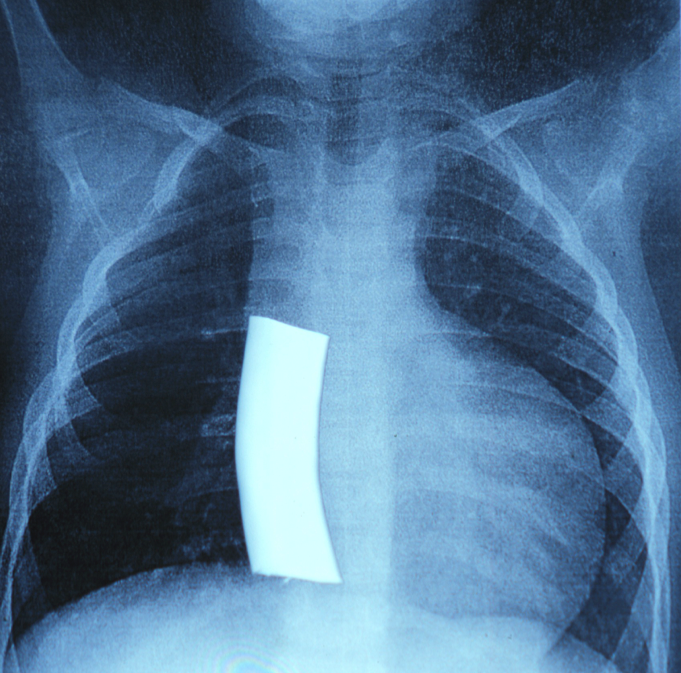In 1513, Leonardo DaVinci could have drawn the primary illustration of a congenital coronary heart defect (CHD). However he was forward of his time. Whereas CHDs have existed so long as folks have, our potential to review them has been restricted. And even as soon as we may examine them, it could be many years earlier than we developed efficient congenital coronary heart defect remedy.

Surgical procedure to deal with CHD wasn’t tried till 1938. And up by 1980, in case you have been born with a CHD, you have been extra prone to die than not. Solely 15% of youngsters born with CHD lived into maturity. Most died within the first yr.
Trendy CHD care has come a great distance. Immediately, greater than 90% of youngsters born with CHDs stay into maturity. And the longer term continues to look brighter as we uncover extra methods to deal with CHD.
However there have been plenty of milestones alongside the way in which which can be value remembering. Very like our understanding of most cancers, trying on the full timeline reveals how far we’ve come, and evokes hope for the way way more we are able to do.
Timeline of Congenital Coronary heart Defect Remedy
This is a snapshot:
- 1858: First work creating classes of CHDs
- 1908: Chapter on Congenital Cardiac Illness Revealed in Trendy Medication
- 1938: First Surgical Restore of CHD
- 1944: First Surgical Restore of Essential CHD
- 1955: Coronary heart Bypass Machine Emerges- Permitting for Extra Advanced Procedures
- 1968: Fontan Process Creates Hope for Single Ventricle Defects
- 1980: Norwood and Glenn Process Added to Fontan for Hypoplastic Left Coronary heart Syndrome Remedy
- 1984: First Pediatric Coronary heart Transplant
1800-Twenties: Understanding & Categorizing CHD
In 1858, Thomas Bevill Peacock printed “On Malformations of the Human Coronary heart.” In it, Peacock tried to categorise CHD into classes. He additionally acknowledged one thing we now know to be true: CHD runs in households.
Genetics, although, wasn’t a completely developed area. Peacock chalked up this familial tendency to “psychological impressions or shocks” mothers had throughout being pregnant.
Roughly 50% of youngsters born with Down syndrome can even be born with a congenital coronary heart defect.
In 1908, Maude Abbott contributed a chapter to Osler’s “Trendy Medication” on Congenital Cardiac Illness. She agreed with Peacock that household historical past performed a task.
Abbott additionally realized one thing new: Some situations have been extra prone to go together with CHD. Abbott observed Down syndrome appeared to be associated, one thing we’ve confirmed to be true.
1938: The First Surgical procedure for a Congenital Coronary heart Defect
Most early medical curiosity targeted on categorizing CHD and hoped to search out methods to stop it. However they shortly found that CHD often isn’t preventable.
So, the following hurdle was tips on how to repair it.
In 1938, Robert Gross, MD, carried out the very first patent ductus arteriosus (PDA) closure. The affected person was a 7-year-old lady named Lorraine Sweeney. Lorraine’s PDA left her exhausted and put her in danger for an early dying. Gross, defying his boss, did the surgical procedure.
It was the primary surgical correction of a CHD in a human. And it was an awesome success. Lorraine lived a vibrant and full life. Whereas most PDA sufferers on the time handed away whereas nonetheless younger, she lived to the age of 89 and have become a great-grandmother. She shared her account shortly earlier than her dying.
Nineteen Forties-Nineteen Fifties: Surgical Innovation & Correcting CHD
Gross’ surgical procedure was an enormous first step. However he found out tips on how to restore one type of CHD. There are over 30 distinctive types. Many kids are born with a number of defects.
In our present classifications, the largest distinction made is between essential and non-critical coronary heart defects. Essential defects want pressing remedy, or they can lead to dying. Whereas PDAs are critical, they’re not instantly life-threatening. However simply 6 years later, impressed by Gross’ success closing a PDA, a essential CHD was corrected with surgical procedure.
Helen Taussig, MD, wanted a solution to save her “blue infants.” These infants had a extra essential CHD, tetralogy of Fallot. And since their coronary heart couldn’t maintain their blood oxygenated, they did truly flip blue. In that first PDA surgical procedure, Taussig noticed a solution to save these infants. She designed a shunt.
Taussig first approached Robert Gross. However he advised her he had his arms full with the PDA.

In 1944, Helen Taussig, in partnership with surgeons Alfred Blalock and Vivien Thomas, first tried what’s now often called the Blalock-Thomas-Taussig shunt. This process continues to be used at this time for situations like pulmonary atresia and tetralogy of Fallot.
By the Nineteen Fifties, Blalock had carried out over 1,000 CHD correctional surgical procedures. He even developed a method for addressing transposition of the good arteries, one other essential CHD.
Continued CHD surgical innovation was made attainable by the coronary heart bypass machine, which was launched in 1955. The bypass machine allowed for safer and extra intricate surgical procedures.
On paper, this era may seem to be a golden period of surgical innovation. And it was. However the mortality fee was nonetheless excessive, each from surgical issues and from the dearth of congenital coronary heart defect remedy choices. The following many years targeted on addressing essentially the most deadly congenital coronary heart defects and enhancing surgical security.
Seventies-Eighties: Hope for Sufferers with the Most Severe CHDs
Single ventricle defects are a number of the most critical types of CHD. In these situations, a part of the center is smaller, lacking, or undeveloped. This implies the center can’t pump blood to each the lungs and the physique. Single ventricle defects account for 7.7% of all CHDs.
Single ventricle defects embody situations like:
Initially, the one remedy obtainable for these sufferers was a coronary heart transplant. However in 1968, the Fontan process was first launched.
Frances Fontan was deeply affected by a teenage affected person he had with tricuspid atresia. Sadly, the affected person died, which drove Fontan to work on this process. The primary affected person he carried out it on additionally had tricuspid atresia and survived it, due to this operation.

The preliminary process created a shunt that despatched blood from the physique by the lungs, bypassing the center. This allowed a single ventricle to ship blood to the physique and lungs concurrently.
The Fontan saved 1000’s of lives. Nevertheless it grew to become extra helpful when paired with the Glenn and Norwood procedures. These two procedures “set the stage” for the Fontan. This staged coronary heart reconstruction is important for kids with hypoplastic left coronary heart syndrome (HLHS).
Largely thought-about one of the essential CHDs, greater than 1,000 infants are born in america with HLHS yearly. With out surgical procedure, most infants die inside two weeks of being born.
Eighties-Nineteen Nineties: Pediatric Coronary heart Transplant Will get Its Begin
Whereas coronary heart transplants began in 1967, it took longer to succeed for pediatric sufferers. The subject was thought-about controversial.
The primary neonatal coronary heart transplant was tried in 1984. Sadly, it was solely a short-lived success. However later that yr, a 2-year-old lady additionally acquired a coronary heart transplant. Now 42, her unique donor’s coronary heart continues to help her energetic and thriving life.
This primary success opened the floodgates. Whereas solely 10 pediatric sufferers acquired coronary heart transplants in 1985, in 1990, 118 acquired transplants. UVA Well being Kids’s was one of many kids’s hospitals main the way in which on this essential milestone. In 1991, we carried out our first pediatric coronary heart transplant.
2000-2010: Minimally Invasive Methods & Grownup Congenital Coronary heart Defect Care
By the early 2000s, the primary wave of youngsters who had survived essential CHDs grew to become adults. Grownup CHD care grew to become a brand new and essential area. Cardiologists skilled in CHDs assist grownup sufferers care for his or her distinctive hearts. That is particularly essential by occasions like being pregnant, which might pressure the center.
For infants with CHDs, the early 2000s noticed a higher give attention to interventional catheterization. Catheterization procedures are minimally invasive congenital coronary heart defect remedies. This kind of process means sooner therapeutic and fewer issues.
Many CHDs now have minimally invasive remedy choices. We now carry out a PDA closure, the primary CHD surgical procedure carried out, with a catheter. And whereas Robert Gross’ unique process took almost 3 hours, it now takes lower than an hour.
2010-Immediately: Higher Prevention, Higher Remedy, & Higher Outcomes
From a sure dying to residing and thriving, CHD care has come a great distance.
However that doesn’t imply there aren’t extra developments forward. Specifically, how can we enhance the standard of those kids’s lives? Packages like our neurocardio clinic assist kids with CHD thrive.
At UVA Well being Kids’s, we’ve been pushing the sector of CHD care ahead, by:
Higher Futures for Kids with CHD
Lots of the first kids to outlive essential CHD are adults now. Typically, they’ve shared their experiences to assist different households discover hope. Whereas CHD continues to be a critical prognosis, there are congenital coronary heart defect remedy choices now that didn’t exist even 50 years in the past.